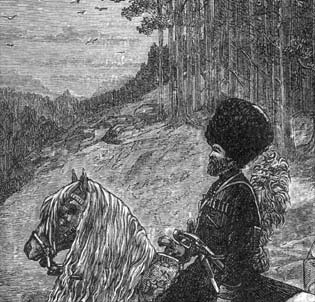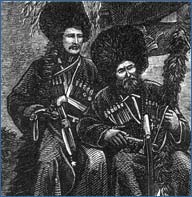In 1818, Russian General Alexander Yermolov built a series of forts along the Sunja River, including Fort Grozny, later the site for the capital of Chechnya. (“Grozny” in Russian means “threatening” or “terrible.”) Describing the Chechens to Tsar Alexander I as “savages,” Yermolov sent expeditions from Fort Grozny to destroy Chechen villages, burn crops and kill all who came in their way. Sufi warriors, led by the guerilla commander and religious leader Imam Shamil, avenged their kin and led revolts against Russian occupation of Chechnya and Daghestan in a campaign that would last for more than 25 years. A legendary military strategist, Shamil created a strict imamate that enforced Islamic laws and customs in the North Caucausus and managed to support a reserve army of 40,000 men. Resistance came at a cost, however. Historians estimate that between 1840 and 1859, Chechnya lost half of its population and its entire economy to the war with Russia. Shamil was finally forced to surrender to Russian troops in 1859.
Upon defeat by Russia, Chechnya was incorporated into the Russian Empire. Thousands of Chechens were deported to Siberia. Nearly 105,000 sought haven in Turkey and other parts of the Ottoman Empire.
Did You Know?
Contemporary Russian impressions of Chechens remain shaped by the writings of such 19th century Russian poets as Mikhail Lermontov, who described them as a lawless people with a strong addiction to the kinzhal (traditional Chechen dagger) and blood vengeance. “Their god is freedom; their law is war,” Lermontov wrote.
- Previous: 1700s: Holy War
- Next: 1910s-1930s: Soviet Chechnya




